The fundamentals of B2B demand generation has changed quickly.
Faster conversions, larger average deal size, lesser customer acquisition costs, and longer CLTV is the new talk of the town. Moving on from spray and pray tactics, the conversation is now shifting to account-based outreach: 1:1 and 1: few accounts, but with a slight pinch, i.e., scalability.
The scalability challenge:
Scalability is the holy grail of B2B demand generation. Marketing leaders worldwide are faced with resource constraints, rising advertising costs across channels, and efficiency bottlenecks in driving account-focused campaigns. The objective is not to over-index resources and increase focus per account. Personalized 1:1 pursuits with the repeatability to run across hundreds of accounts require commitment to the cause.
In this 2-part blog series, we will guide you on how to scale B2B demand generation using scalable account-based marketing. We will share tips on scaling ABM impacts with a perfect balance between economies and impacts of the program.
What is ABM-Focused Demand Generation and Why to Invest in it Now?
The role of marketing and marketing leaders in every industry has pivoted away from brand building and lead nurturing to more focused KRAs such as driving measurable revenue impacts and commercial results. Marketing and sales teams now need to:
Ø Build a deeper understanding of their target customers, their use cases, and macro-environments.\
Ø Define an insights-driven customer journey with the right mix of channels and contextualized messaging.\
Ø Owning and optimizing customer experiences, including digital transformation efforts.
Ø Build alignment with sales to enhance the customer lifetime value.
Gone are the days when subjective mandates like brand building, awareness, and engagements were the yardsticks to measure the marketing impacts. With demand generation eclipsing traditional marketing approaches, CMOs are now expected to provide proof of how they are driving qualified sales pipeline, accelerating deals, minimizing CAC, and increasing annual recurring revenue.
Standing out amidst the list of these metrics are 'customer acquisition costs' and 'customer lifetime value' that has garnered more importance than others.
CMOs facing pressure to drive pipeline quality and revenue growth need to address these critical areas:
Market segmentation: Marketing leaders must identify in-market accounts, industries, and key decision-makers that are best aligned with their ICPs.
HIRO pipeline: Identify key campaigns that will drive high-intent pipeline and bolster pipeline velocity with faster lead-to-conversion ratio.
Average deal size: Evaluate and implement strategies to increase average deal size.
Customer lifetime value: How can they maximize customer retention and renewal revenues?
In simple words, B2B marketing leaders are now expected to evidence direct contributions to the bottom line. This is where ABM-focused strategies can go a long way towards addressing these demands.Traditional demand generation approaches, however scalable, can not provide results and precision of an ABM campaign.
.
ABM Vs. Demand Generation
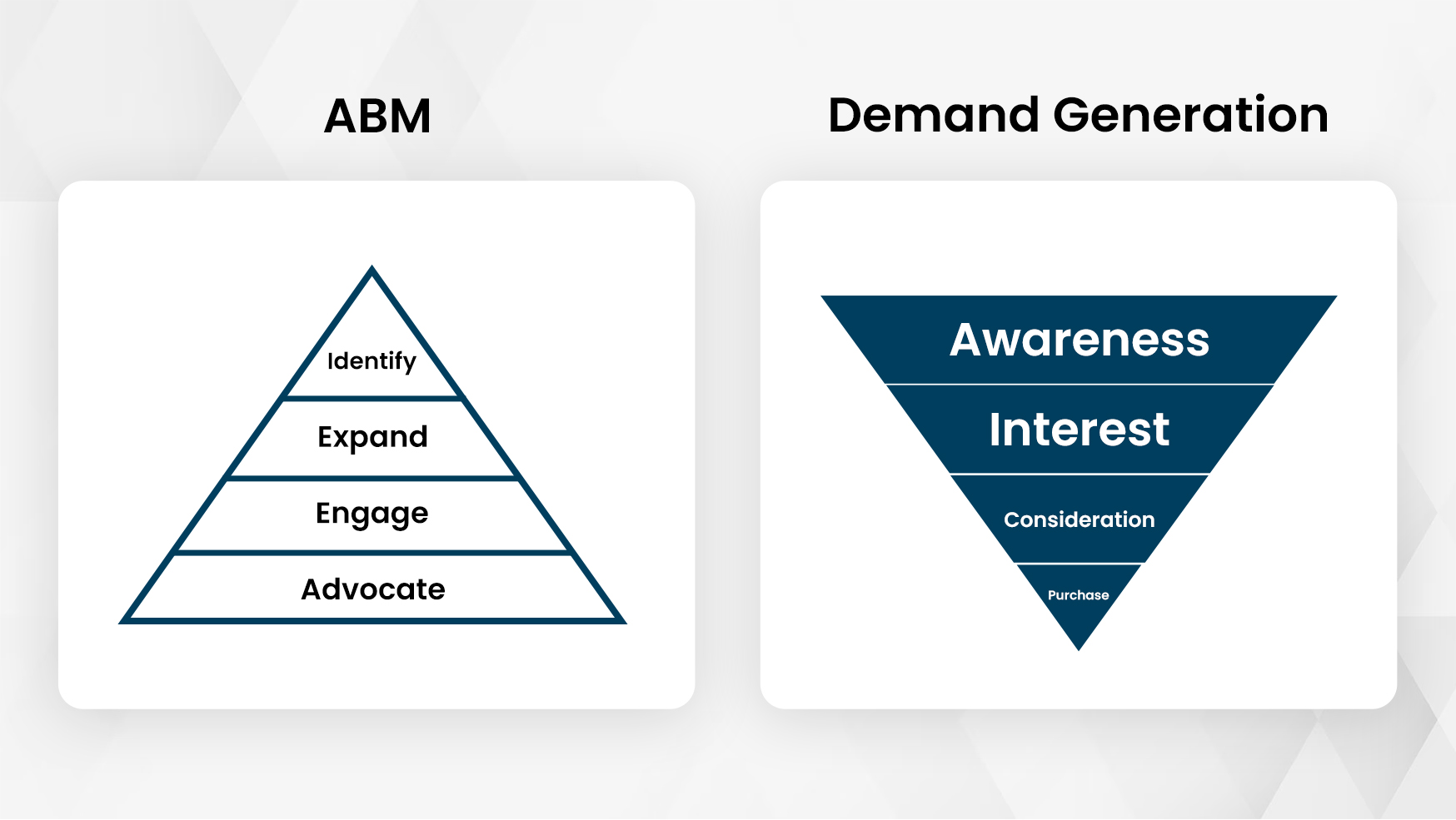 Account-based marketing is not a new tactic but it's evolution in the recent past is for no marketer to overlook its benefits in the overall demand generation strategy. Denave's AI-powered B2B sales intelligence solution encompassing account, industry, and buyer intelligence can fuel dynamic personalization into hundreds or even thousands of accounts. The focus is on accumulating opportunity intelligence across the entire buying committee, then harnessing this information to stitch together a more relevant conversation with the prospects.
Account-based marketing is not a new tactic but it's evolution in the recent past is for no marketer to overlook its benefits in the overall demand generation strategy. Denave's AI-powered B2B sales intelligence solution encompassing account, industry, and buyer intelligence can fuel dynamic personalization into hundreds or even thousands of accounts. The focus is on accumulating opportunity intelligence across the entire buying committee, then harnessing this information to stitch together a more relevant conversation with the prospects.
How does a typical B2B demand generation funnel looks like?
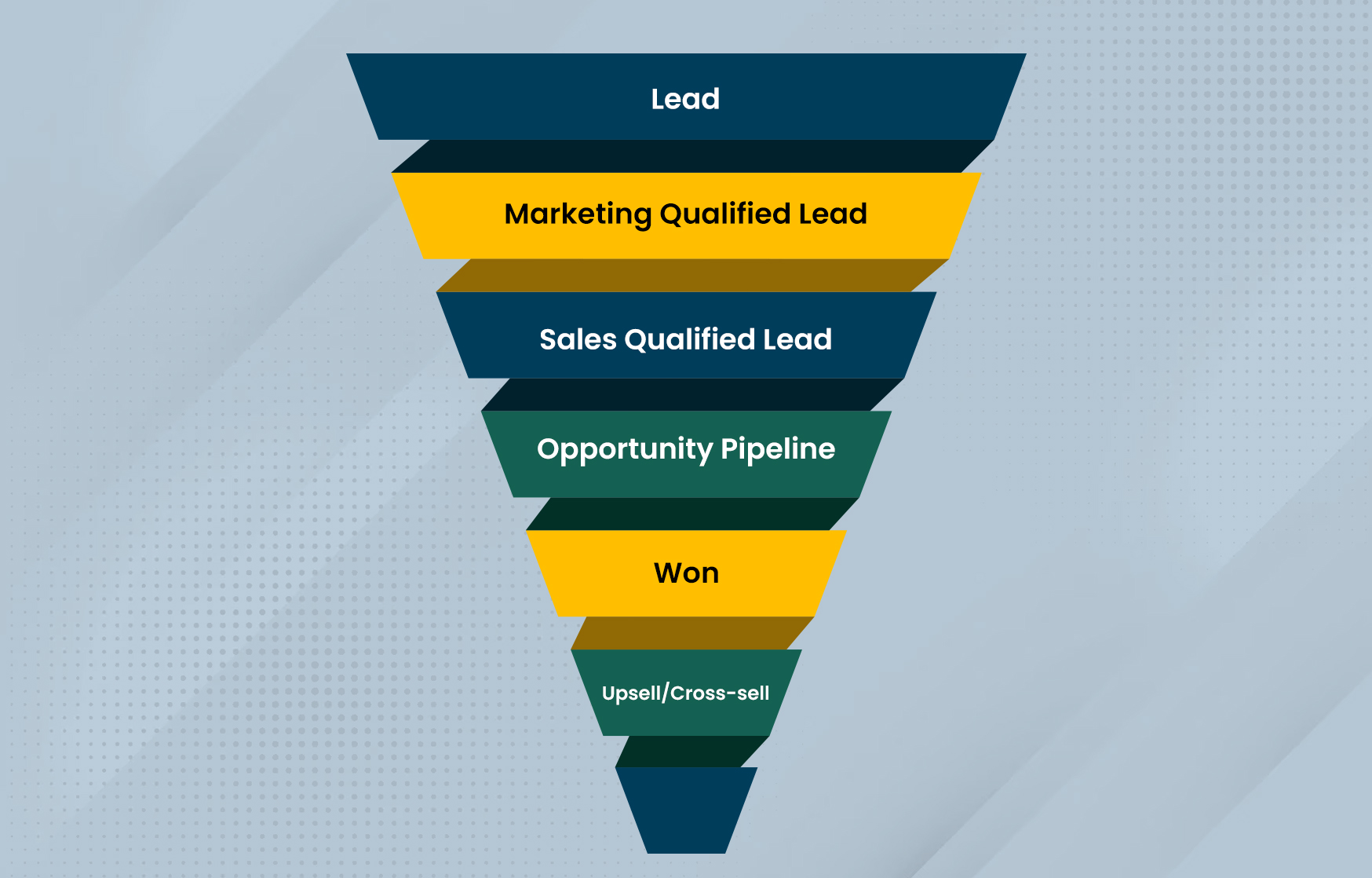
Deploying the Right Account-based Marketing Strategy
Account-based marketing takes has multiple variations and evaluating which approach is right for your business depends on factors such as your resources, goals, target market, and time. Conventionally, companies rely on three broad categories of account-based marketing:
. 1:1 ABM: This is an extremely focused strategy targeting individual accounts and treating every single account as a TAM of one.
. 1: Few Accounts: This is a strategy where a small, curated list of accounts that share common features are grouped into one TAM. They are engaged with lookalike messaging, while delivering account-specific personalization at later stages, where stakes are higher.
. 1: Many Accounts: This is where companies can create persoanlized marketing campaigns for a target list of accounts at scale, enabled by technology like GenAI, marketing automation, and sales intelligence platforms.
Denave’s ABM-Focused demand generation
The ABM-led, B2B demand generation approach offered by Denave allows for a culmination of the best of all three variations of the account-based marketing. It can help marketing leaders to deliver on key bottom-line metrics such as deals, ROI, CAC, and CLTV.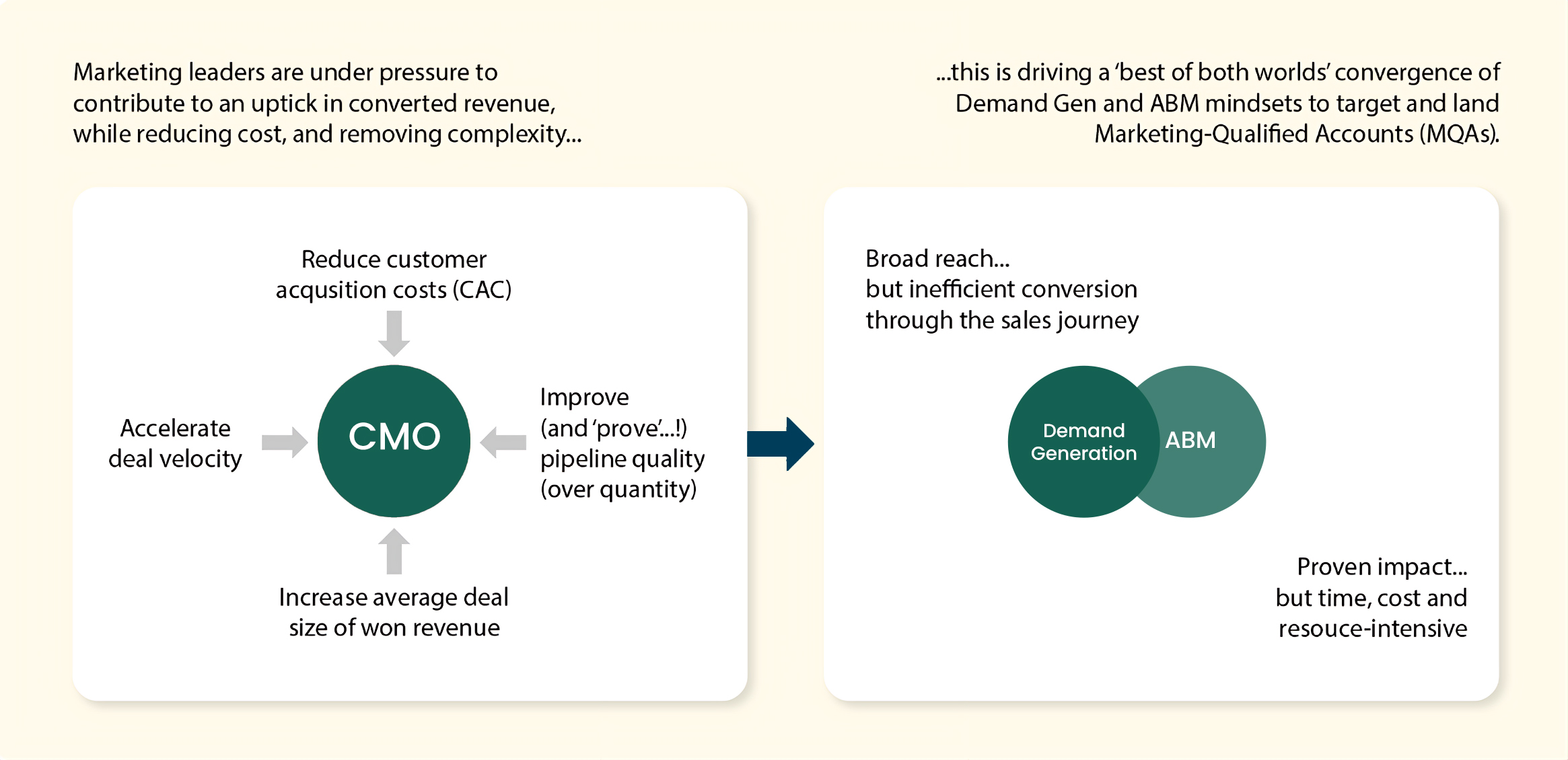
Focused ABM versus Scalable ABM
Conventional wisdom dictates that there are two types of ABM strategies, i.e., focused ABM that considers each target account as a market of one. On the other hand, scalable ABM conjures the best of both worlds i.e. account-based marketing and demand generation tactics.
The scalable approach harnesses sales signals, viz., account, industry, buyer, and intent signals to group a cluster of accounts and applies personalized messaging to these groups for broader market impact.
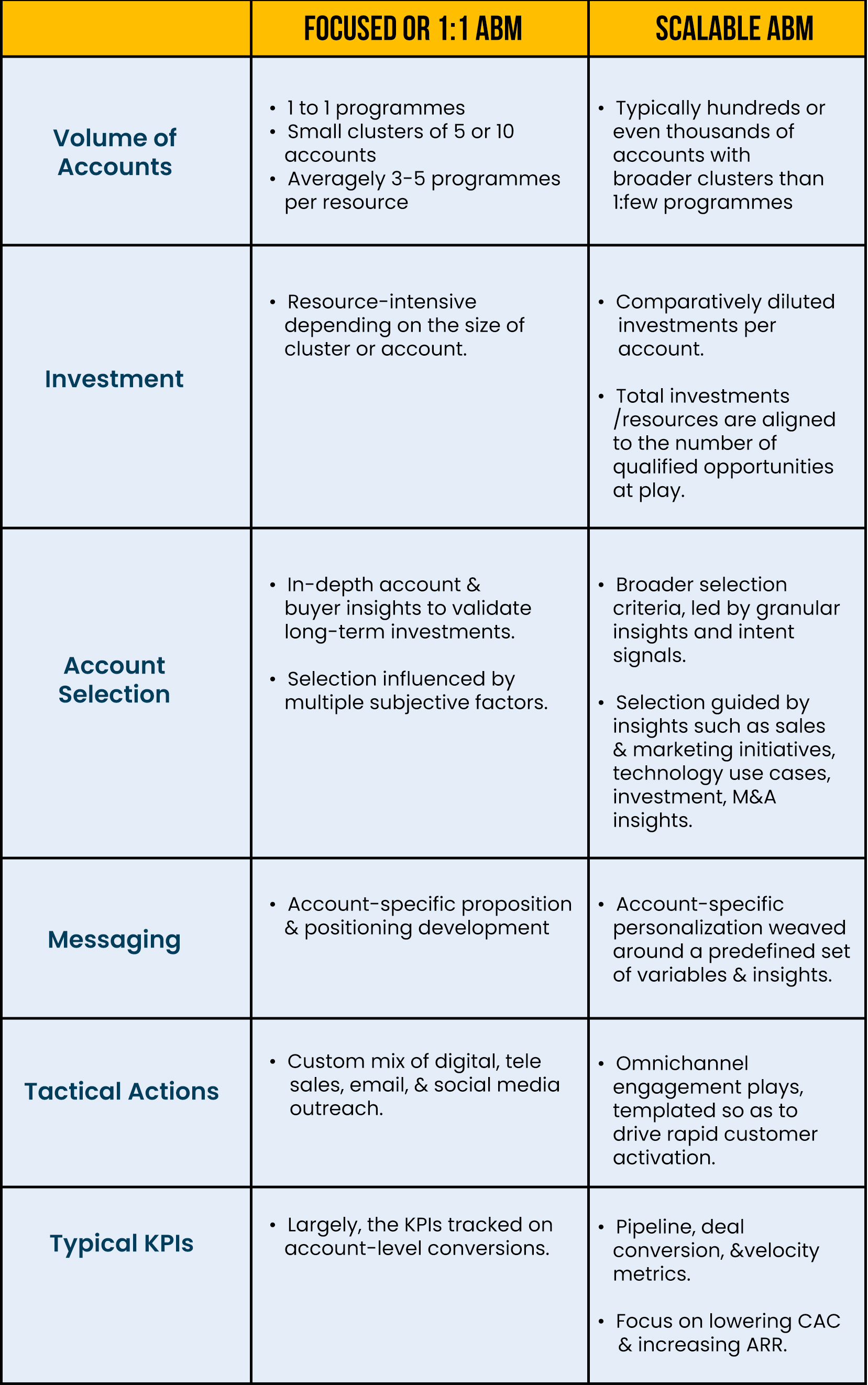
Key Principles of a Scalable ABM framework
Step1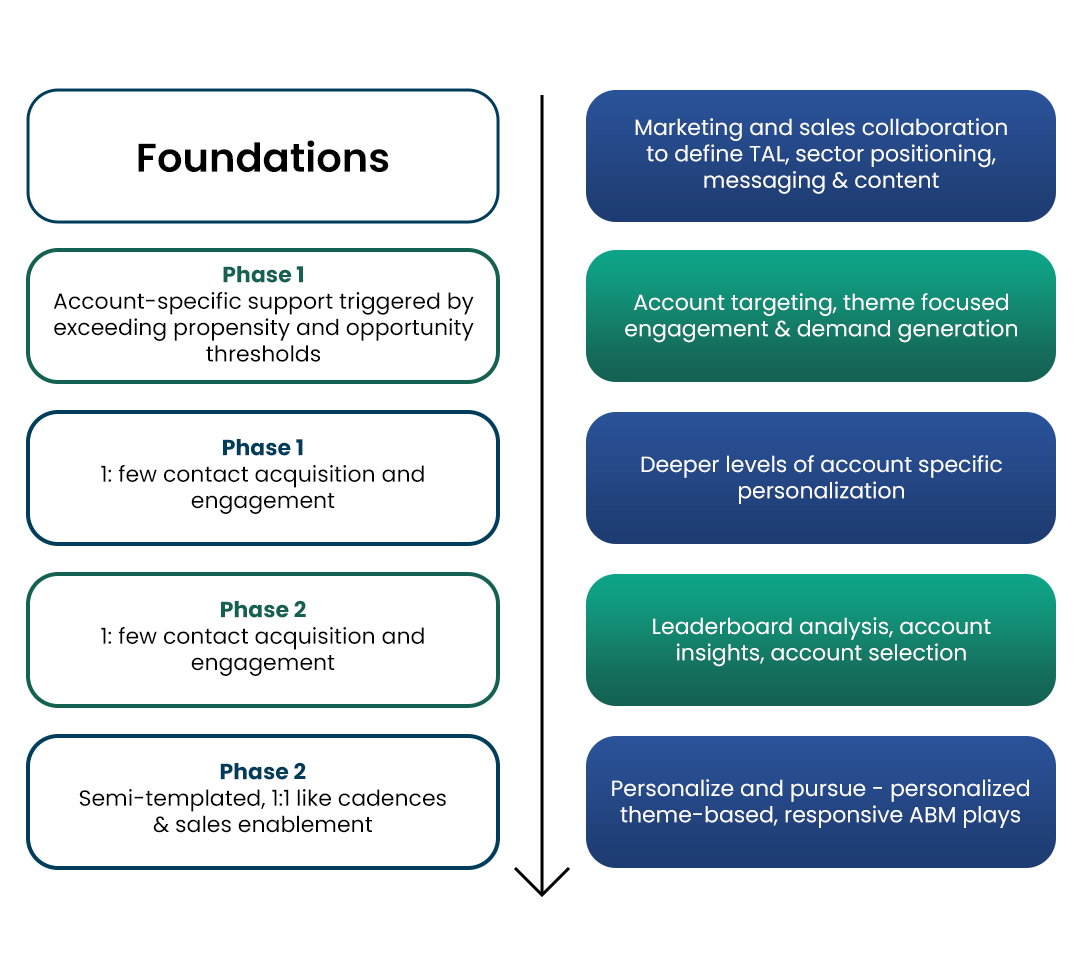
Step 2
With the scalable ABM campaign now live, we are tracking various 1st and 3rd party propensity indicators to create a leaderboard. This leaderboard is crucial for making informed decisions, helping us identify which accounts within the TAL are emerging as the most significant opportunities. It provides insights such as:
. Which accounts are most engaged with the campaign?
. Which messages, themes, and pain points resonate the most with each account?
. What can we learn from their contextual intent patterns?
. Which contacts are directly engaging with our Marketing and Sales channels?
. What have they communicated about their challenges and priorities?
Once the campaign is active, we use the buying propensity data to develop a sales chart that offers insights including:
. How can we best appeal to the nuances of their firmographic and technographic profiles?
. How can we align our value proposition with specific aspects of their strategic roadmap?
. Which events and activities within the organization can serve as a relevant 'hook' for initiating meaningful conversations?
. Who are the key members of the buying committee, and why would they be interested in our offerings?
Enforcing organisational alignment
1. Marketing and Sales Alignment: Ensuring that marketing and sales teams work together seamlessly can boost lead generation and conversion rates. Shared goals, collaborative strategies, and clear communication channels are essential for a unified approach to attracting and retaining customers.
2. Data Alignment: Aligning data across departments ensures that all teams have access to accurate and consistent information. This facilitates better decision-making, more personalized customer interactions, and a cohesive strategy driven by reliable insights.
3. Technology Alignment: Integrating the right technologies across the organization streamlines workflows and enhances productivity. Ensuring that all tools and platforms work well together helps eliminate silos, reduces redundancies, and supports a unified operational framework.
4. Marketing, Sales, and Customer Success Team Alignment: Aligning these three critical teams ensures a smooth customer journey from prospecting to post-sale support. Coordinated efforts lead to higher customer satisfaction, improved retention rates, and a more effective overall strategy for driving business growth.
Building Smart Account Journey
The account journey isn't linear Gartner's research identified six B2B buying "jobs" that customers must complete to their satisfaction to finalize a purchase:
. Problem identification: "We need to take action."
. Solution exploration: "What solutions are available for our problem?"
. Requirements building: "What specific functions do we need from the purchase?"
. Supplier selection: ""Does this meet our needs?"
. Validation: "We believe we have the right solution, but we need confirmation."
. Consensus creation: "We need everyone's agreement."
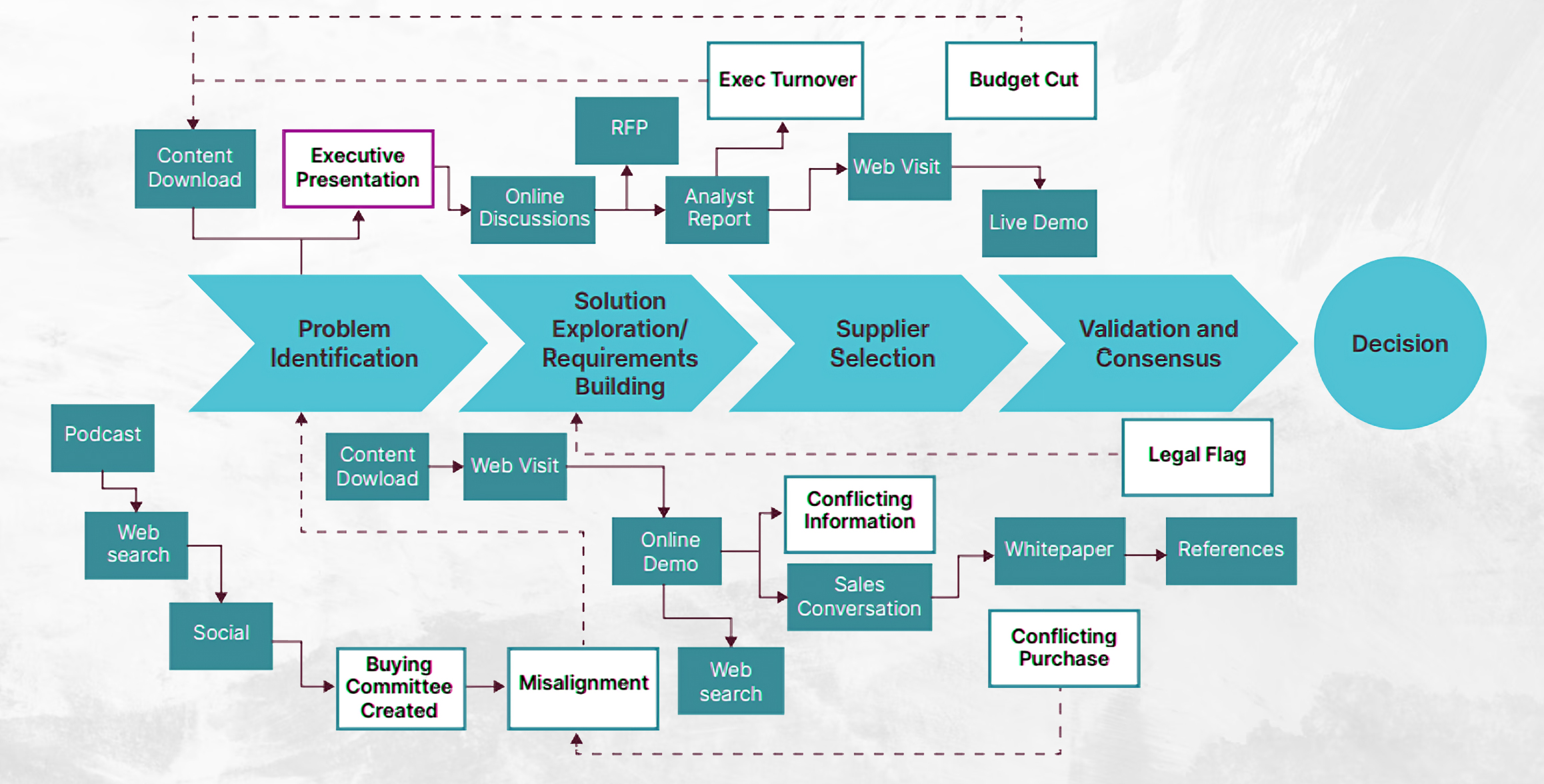
Five core processes for smarter account conversion journey:
. Build your Account Intelligence base.
. Identify the accounts crucial to your business.
. Engage with relevant, personalized engagements across channels.
. Close marketing and sales to close deals.
. Measure account progress.
Conclusion:
Scaling B2B demand generation strategy through account-based marketing (ABM) is essential for achieving faster conversions, larger deal sizes, and enhanced customer lifetime value (CLTV). As traditional "spray and pray" methods become obsolete, the focus shifts to personalized, account-based outreach at scale. However, scalability remains a significant challenge due to resource constraints and rising costs.
To address this, marketing leaders must adopt a scalable ABM approach that leverages AI-powered sales intelligence to drive personalized engagement across numerous accounts. This involves aligning marketing, sales, and customer success teams, integrating technologies, and ensuring consistent data utilization.
A successful scalable ABM strategy hinges on understanding target customers, crafting insights-driven journeys, and aligning closely with sales to maximize impact. Tailoring the ABM approach to fit the business model-whether through 1:1, 1: few, or 1:many strategies-can optimize resource allocation and drive significant business outcomes.
Ultimately, by combining focused and scalable ABM tactics, B2B marketers can meet the demands of driving qualified pipelines, reducing customer acquisition costs, and increasing recurring revenue, thus making a direct contribution to the bottom line.
Read Responses
No Comments
Leave a Reply
Your email address will not be published.

